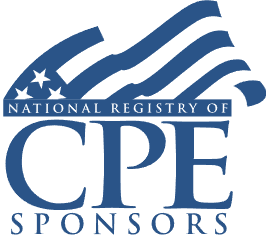Separate Share Rule Considerations in Structuring IRA Trusts
Ensuring Beneficial "Stretch" Treatment for Beneficiaries of IRA See-Through Trusts Through Separate Share Application

Course Details
- smart_display Format
On-Demand
- signal_cellular_alt Difficulty Level
Intermediate
- work Practice Area
Estate Planning
- event Date
Tuesday, August 29, 2017
- schedule Time
1:00 PM E.T.
- timer Program Length
90 minutes
-
This 90-minute webinar is eligible in most states for 1.5 CLE credits.
-
BARBRI is a NASBA CPE sponsor and this 110-minute webinar is accredited for 2.0 CPE credits.
-
BARBRI is an IRS-approved continuing education provider offering certified courses for Enrolled Agents (EA) and Tax Return Preparers (RTRP).
-
Live Online
On Demand
This CLE/CPE course will provide estate planning counsel with a thorough and practical guide to the separate share rule requirements and calculations as they apply to IRA beneficiary trusts. The panel will detail the specific requirements for designating separate shares in trust documents, outline various IRS pronouncements on applying the rule, and offer specific drafting language and structuring tips to ensure that an IRA beneficiary trust conforms with the separate share requirements.
Description
One of the most valuable estate planning tools for both protecting and maximizing the value of IRA assets is the use of a trust as an IRA beneficiary. Properly structured, an IRA beneficiary trust allows extended tax deferral benefits by “stretching out” the payments over the beneficiary’s life expectancy, so long as the trust document follows the “separate share” rules of IRC 663(c).
The separate share rule requires that, for purposes of calculating distributable net income (DNI), any trust that has more than one beneficiary and “substantially separate and independent shares of different beneficiaries in the trust shall be treated as separate trusts.”
In the context of an IRA beneficiary trust, the separate share rules also allows an IRA to factor in the ages of each beneficiary of the IRA in making required minimum distributions (RMDs), thus achieving “stretch” treatment.
However, failure to properly structure the IRA trust can lead to unfavorable consequences. The trust document must properly identify the separate shares per beneficiary, or the trust is required to make the RMDs based on the age of the life expectancy of the oldest beneficiary and will lose the advantage of prolonged tax deferral from stretching out payments.
Tax advisers and estate planners structuring IRA trusts must have a deep and practical understanding of the separate share rules to avoid negative tax consequences. Listen as our experienced panel provides detailed guidance, including sample language, to help you master the intricacies of the separate share rules in drafting IRA beneficiary trusts.
Outline
- Structure of IRA beneficiary trusts
- Separate share rule terms for DNI calculation
- RMD payout terms absent separate share rule application
- Structuring trusts to ensure beneficiaries receive stretch treatment under separate share rule
- Ensuring beneficiary designations allow for separate share rule treatment
Benefits
The panel will review these and other key issues:
- Specific structuring rules and beneficiary designations that must be followed to ensure that beneficiaries get “stretch” treatment of RMDs
- Factors for evaluating beneficiaries of an IRA trust
- Provisions that must be included in trust language for a trust to qualify for look-through treatment
- Impact of a charity or non-individual beneficiary on application of the separate share rules
- Disclaimer provisions to achieve maximum stretch treatment
NASBA Details
Learning Objectives
After completing this course, you will be able to:
- Identify required trust terms and beneficiary designations to ensure an IRA beneficiary trust conforms with the separate share rule
- Discern the difference in treatment of RMD payments between a trust that receives stretch treatment and one that does not
- Determine what info and structures are needed in designating beneficiaries in a trust receiving stretch treatment
- Field of Study: Taxes
- Level of Knowledge: Intermediate
- Advance Preparation: None
- Teaching Method: Seminar/Lecture
- Delivery Method: Group-Internet (via computer)
- Attendance Monitoring Method: Attendance is monitored electronically via a participant's PIN and through a series of attendance verification prompts displayed throughout the program
- Prerequisite: Three years+ business, law or public firm experience at mid-level within the organization, preparing complex trust vehicles for estate planning; supervisory authority over other preparers/accountants. Specific knowledge and understanding of Individual Retirement Accounts within an estate planning structure, IRA beneficiary trusts, and IRS regulations addressing requirements for "see-through" trusts; familiarity with the conduit trusts and accumulation trusts.

Strafford Publications, Inc. is registered with the National Association of State Boards of Accountancy (NASBA) as a sponsor of continuing professional education on the National Registry of CPE Sponsors. State boards of Accountancy have final authority on the acceptance of individual courses for CPE Credits. Complaints regarding registered sponsons may be submitted to NASBA through its website: www.nasbaregistry.org.

Strafford is an IRS-approved continuing education provider offering certified courses for Enrolled Agents (EA) and Tax Return Preparers (RTRP).
Unlimited access to premium CLE courses:
- Annual access
- Available live and on-demand
- Best for attorneys and legal professionals
Unlimited access to premium CPE courses.:
- Annual access
- Available live and on-demand
- Best for CPAs and tax professionals
Unlimited access to premium CLE, CPE, Professional Skills and Practice-Ready courses.:
- Annual access
- Available live and on-demand
- Best for legal, accounting, and tax professionals
Unlimited access to Professional Skills and Practice-Ready courses:
- Annual access
- Available on-demand
- Best for new attorneys
Related Courses

Cross-Border Estate Planning After Tax Reform: New Opportunities and Obligations
Available On-Demand
Recommended Resources
Building Your Book: Strategies to Secure Long-Term Success
- Business & Professional Skills
- Career Advancement
- Talent Development